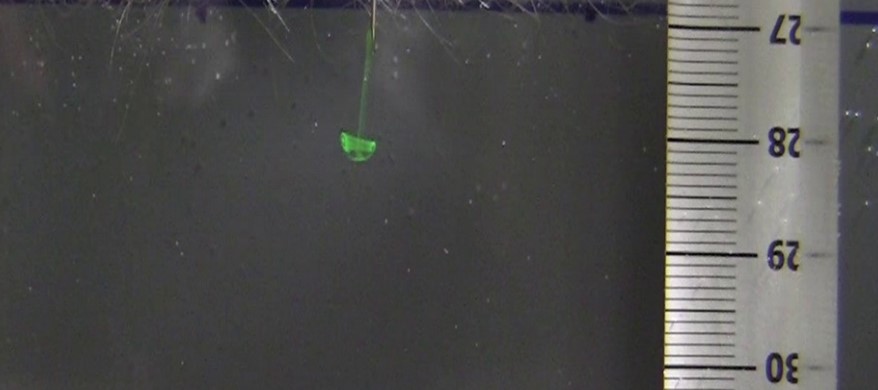Occurrence of colloidal particle swarms in fractured and porous media
By Pierrick Spekreijse
Colloid retention and transport processes have been a subject of study in the past decades and much research has been done to provide explanations for the occasional observation that colloids have an enhanced transport rate compared to solutes. One of the responsible mechanisms may be the occurrence of particle swarms. The observation of particles forming a swarm in open tanks is not new, but the application of particle swarm behaviour to colloid transport is one of the latest developments in the research area. The settling velocity of swarms in a dilute solution under gravity can be as much as 1000 up to 10 000 times as much as the settling velocity of a single particle.
Gravity driven swarm behaviour in fractures is different than in open tanks, as the fracture walls influence the cohesiveness and velocity of the swarm. Moreover, it is not yet well understood if and how particle swarms move through porous media.
Understanding of this behaviour is important for the widespread use and prevalence of colloidal particles. An example of the use of colloids is the application of DNA tracers, which allow for multipoint detection by creating DNA “labels” for each source location. These colloidal particles can be the future for hydrological tracer use. Another example of the presence of colloidal particles is the urban stormwater runoff contaminant transport. Colloidal compounds are a large part of urban contaminants and can quickly infiltrate into the environment via so called blue-green infrastructure solutions. Formation of colloidal swarms may result in even faster spreading of urban pollution into the environment. It is therefore important to understand in which environments colloidal swarms can be expected to occur.
This study examines the occurrence and behaviour of colloidal swarms in fractures and porous media. In order to observe particle swarms as they move through these systems, 3D-printed macro-models are constructed based on a fractured clay and a piece of highly porous waste ceramic, also known as ZOAK. Fluorescent colloidal particles are injected into these macro-models and the particle behaviour is examined. Experiments are also performed with real fractured clay and a real piece of ZOAK, in order to predict whether colloidal swarms could play a role in these systems.
